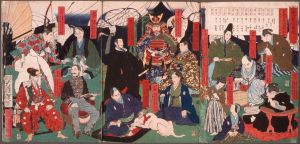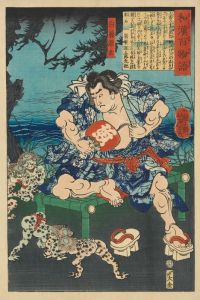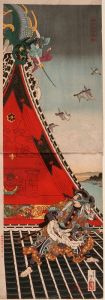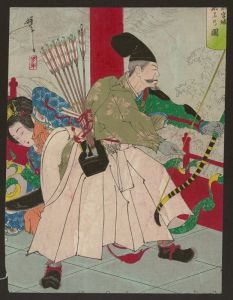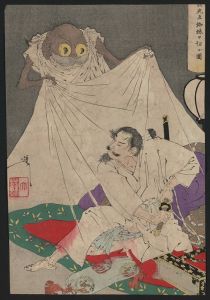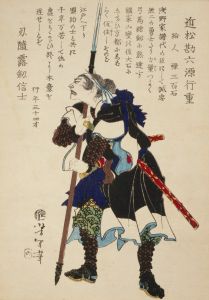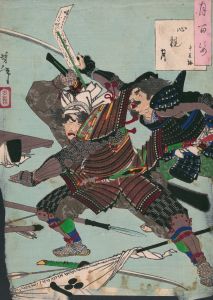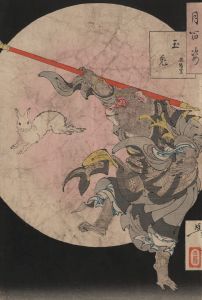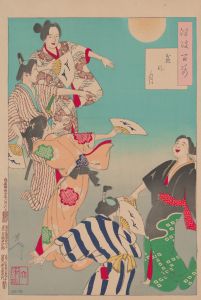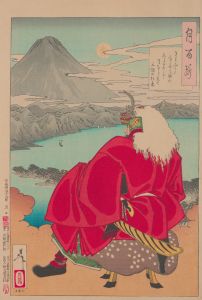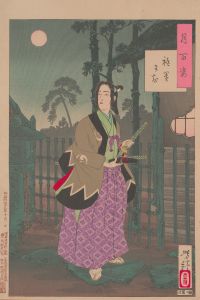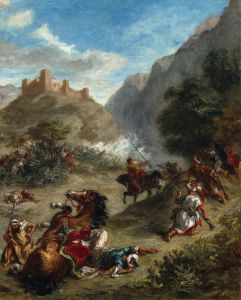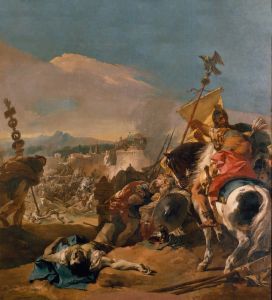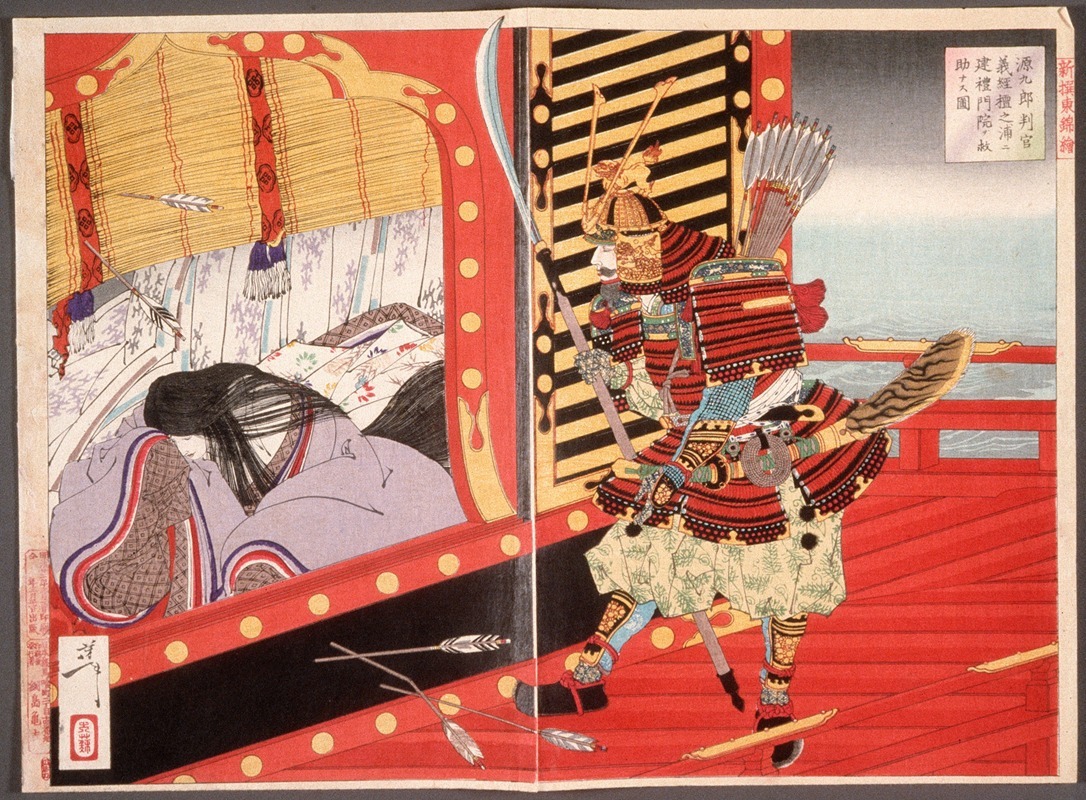
Minamoto no Yoshitsune Rescuing Kenrei Mon’in during the Battle of Dannoura
A hand-painted replica of Tsukioka Yoshitoshi’s masterpiece Minamoto no Yoshitsune Rescuing Kenrei Mon’in during the Battle of Dannoura, meticulously crafted by professional artists to capture the true essence of the original. Each piece is created with museum-quality canvas and rare mineral pigments, carefully painted by experienced artists with delicate brushstrokes and rich, layered colors to perfectly recreate the texture of the original artwork. Unlike machine-printed reproductions, this hand-painted version brings the painting to life, infused with the artist’s emotions and skill in every stroke. Whether for personal collection or home decoration, it instantly elevates the artistic atmosphere of any space.
"Minamoto no Yoshitsune Rescuing Kenrei Mon’in during the Battle of Dannoura" is a woodblock print by the renowned Japanese artist Tsukioka Yoshitoshi. Yoshitoshi, who lived from 1839 to 1892, is celebrated for his innovative and dynamic ukiyo-e prints, which often depict historical scenes, folklore, and kabuki theater. This particular artwork is part of Yoshitoshi's series that explores historical and legendary events from Japan's rich past.
The print illustrates a dramatic moment from the Genpei War, a pivotal conflict in late 12th-century Japan between the Taira and Minamoto clans. The Battle of Dannoura, which took place on April 25, 1185, was the final and decisive naval battle of this war. It resulted in the defeat of the Taira clan and the establishment of the Kamakura shogunate under Minamoto no Yoritomo, Yoshitsune's elder brother.
Minamoto no Yoshitsune, a legendary figure in Japanese history, is celebrated for his strategic brilliance and martial prowess. In this artwork, Yoshitoshi captures Yoshitsune's heroism during the battle. The scene depicts Yoshitsune rescuing Kenrei Mon’in, also known as Taira no Tokuko, who was the widow of Emperor Takakura and the mother of Emperor Antoku. Following the Taira clan's defeat, Kenrei Mon’in attempted to drown herself in the sea, a fate that many Taira members met to avoid capture. The print portrays Yoshitsune intervening in this tragic moment, showcasing his valor and compassion.
Yoshitoshi's work is characterized by its vivid colors, dynamic composition, and expressive figures, all of which are evident in this print. The artist's ability to convey movement and emotion is particularly notable, as he captures the tension and urgency of the rescue. The swirling waters and dramatic poses of the figures contribute to the sense of action and immediacy.
This print is part of Yoshitoshi's broader oeuvre, which often reflects his interest in historical subjects and his ability to blend traditional ukiyo-e techniques with a more modern sensibility. His works are known for their psychological depth and attention to detail, qualities that have earned him a lasting place in the history of Japanese art.
Yoshitoshi's depiction of Minamoto no Yoshitsune and Kenrei Mon’in is not only a representation of a historical event but also a reflection of the cultural and artistic values of the Meiji period, during which he worked. The Meiji era was a time of significant change in Japan, as the country opened to the West and underwent rapid modernization. Yoshitoshi's art, while rooted in traditional Japanese themes, also shows an awareness of these broader cultural shifts.
Overall, "Minamoto no Yoshitsune Rescuing Kenrei Mon’in during the Battle of Dannoura" is a testament to Yoshitoshi's skill as an artist and his ability to bring historical narratives to life through the medium of ukiyo-e. The print remains an important piece for understanding both the historical context of the Genpei War and the artistic innovations of the Meiji period.





